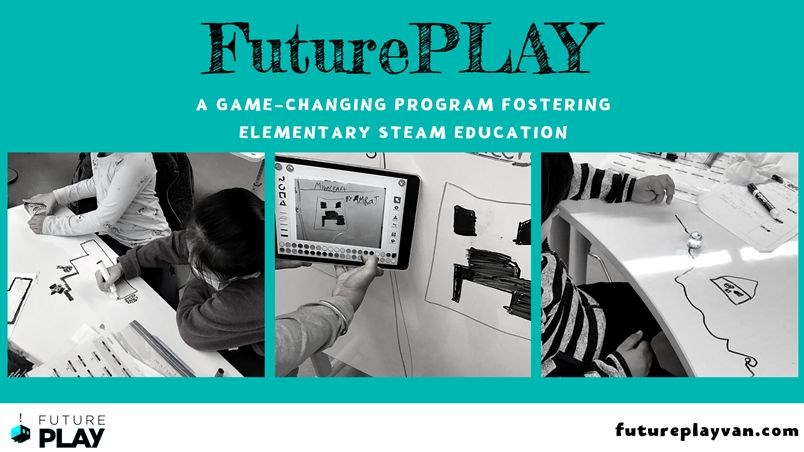FuturePLAY lab used as a space for collaboration

FuturePLAY is a District-wide educational program that supports Science, Technology, Engineering, Arts and Mathematics (STEAM) related literacy inside elementary school classrooms. FuturePLAY labs encourage students in grades 4 to 7 to think, learn and create in a flexible environment and provide access to the latest technology in STEAM education.
On a typical day at Henderson Elementary, Aoife Leavy’s Grade 5 class uses their FuturePLAY lab for problem-solving and research.
“There was a massive flood on our school’s playground one day,” says Leavy. “It gave me the idea to have my class work through a real-life problem. I asked them to design and build a prototype model for a flood solution project that would theoretically get cars from one side of the playground to the other and completely avoid the flood,” she explains.
Inside the FuturePLAY lab, Leavy’s class began their research for the flood solution project by using whiteboards to sketch out their prototypes. The class then began to build their structures using materials such as cardboard, foam, popsicle sticks, tape, recycled boxes and scrap paper. The following week, the Grade 5 class tested their structures with a pool filled with water where toy cars had to successfully travel from one side of the pool to the other.
Kimberley Seto’s Grade 5 class also use the lab to code with ozobots. These are toy robots that teach students computer programming by drawing lines, colours and codes on digital and physical surfaces. “My students love to write stories using ozobots on the whiteboard tables in the lab,” Seto explains. “With ozobots, they can draw lines in different colours to tell a story,” she says.
Seto is also leading her class through Minecraft Education - a game-based platform where students can learn the basics of coding in a secure and collaborative online environment. “I’ve assigned a project where students need to build different aspects of Ancient Rome,” she says. “They will present the final product at the end of the term.”
With the technology and collaborative space available inside Henderson Elementary’s FuturePLAY lab, Leavy and Seto say their students demonstrate more creativity and thoughtful problem-solving that may not take place inside a regular classroom.
To find out more about what happens inside a FuturePLAY lab, follow @FuturePlay4 on Twitter.
Learn more at: futureplayvan.com
